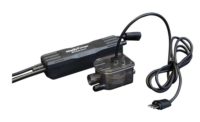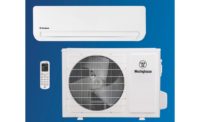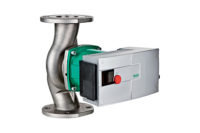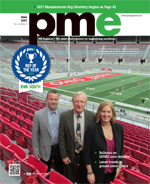For apartments or hotels this means a drain running the height of the building with a P- trap at each connection, which dries out for more than half the year when there is no cooling. As the waste stack is piped indirect, there is no problem with sewer gases entering living spaces. The only things that enter living spaces through the drain stack are cockroaches, fleas, noise, smoke from cigarettes and whatever else someone might smoke, smoke from a fire and air. These drains probably violate fire codes requiring smoke-tight partitions, but nobody ever seems to worry about that.
People didn’t used to worry much about unplanned air movements within a building. We have specified air barriers into every building we have ever designed and have always resisted leaving gaping holes in otherwise airtight demising separations.
What many people do is connect the condensate into a “washing machine tee” in a kitchen sink drain in violation of the code. Why dishwashing machines can be connected to a sink drain, but condensate is considered too dirty is beyond me. The result is a code-mandated serious flaw in the building, unless maybe someone puts a second trap under the sink, some sort of trap primer, finds a way around the “double-trapped” prohibition and sweats it out until it’s time to find out what the inspector will say.
Things are changing. Bedbugs are moving from one dwelling to another through these pipes and more and more people are waking up to the reality of the need to build air barriers into buildings (dumping the condensate out through a hole in the wall to the outdoors isn’t going to work), and to follow codes that are slowly starting to recognize the need for air barriers.
Can you please work on getting the code changed to allow condensate to be connected to a sink drain upstream of the trap, or else find a good reason why it shouldn’t be piped that way? Also, have codes clarify how, if at all, it can be legally connected to a sink in the same dwelling unit.
Henry Gifford
Chris Benedict, R. A.
New York, N.Y.
Julius Ballanco’s reply: Mr. Gifford raises a very interesting point. This is an area where the International Plumbing Code and the Uniform Plumbing Code differ in their requirements. Both codes require the condensate to indirectly discharge to the sanitary drainage system. However, the UPC does allow the condensate to discharge into the tailpiece of a lavatory similar to a dishwasher tee under the kitchen sink. The International Plumbing Code, used in New York City, does not permit such an installation. Perhaps it is time for the International Plumbing Code to modify its requirements.





